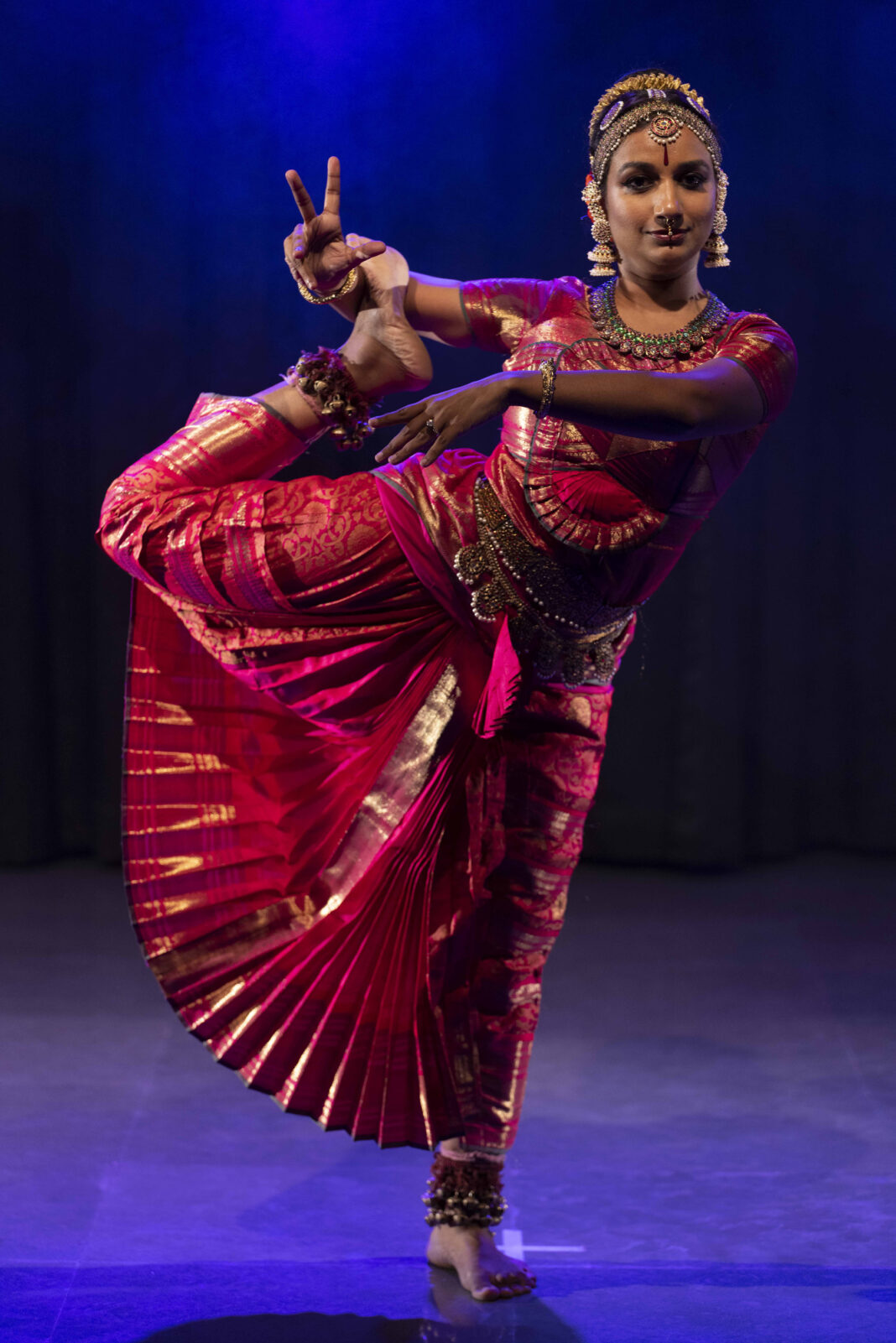As Natya Tarangini’s Hyderabad branch celebrates 17 years, Yamini Reddy reflects on reviving Kuchipudi, building a cultural ecosystem and why Indian classical arts deserve the spotlight now.
In a world increasingly captivated by fleeting digital moments, Yamini Reddy is quietly—and resolutely—keeping the timeless tradition of Kuchipudi alive. As a distinguished Kuchipudi dancer, teacher, choreographer and director of Natya Tarangini, her artistry and vision are reshaping how this classical Indian dance form is taught, performed and preserved.
When Yamini Reddy moved to Hyderabad in 2007 after her marriage, her dreams for the city and the art form she devoted her life to were modest. She envisioned merely a small branch of her parents’ established institute in Delhi, where she had honed her craft. “I started with just three to four students. I didn’t advertise; it was just a passion project. I was performing a lot at the time, and I thought, why not teach?” she recounts. The result was an organic growth that exceeded all expectations. Today, Natya Tarangini’s Hyderabad branch trains over a hundred students, a testament to Yamini’s deep commitment to nurturing the next generation of Kuchipudi dancers.
Her teaching method, Yamini explains, is rooted in the personal and the profound. “We believe in personal training. From the youngest to the senior-most students, we take great care in their growth,” she says. Her father, legendary Kuchipudi exponent Raja Reddy, developed a style of choreography and instruction that Yamini and her sister Bhavana have carried forward. “It’s a little different from other Kuchipudi styles—people find it refreshing, from the creativity to the teaching techniques. That’s why I think word-of-mouth worked so well for us.”
But beyond technique and rigor lies something even more fundamental: her emotional connection to the dance form and its birthplace. “Kuchipudi is native to us Telugu people. When I came back from Delhi, I was so happy to return to the roots—to set up an institute in the birthplace of the dance form itself.” Yet, even as she celebrates this cultural legacy, Yamini is candid about the challenges of performing in a world enamored with cinema and digital entertainment.
Cultural landscape
in flux
In Hyderabad, where the glamour of Tollywood often eclipses traditional arts, cultivating an audience for Kuchipudi has become an uphill battle. “The culture here is rich and many parents are eager to teach their children classical dance for the discipline and balance it brings to the mind and body. But as audiences, people are not as engaged as they used to be. They’ll flock to anything cinema-related, but standalone classical arts? Not so much,” she laments.
Yamini believes that consistent performances are crucial for nurturing a cultural ecosystem. “It’s not about doing one or two concerts. It has to be a continuous effort. In places like Delhi or New York, you know there’s always something happening. There’s a monthly calendar for theater, dance, or music performances. In Hyderabad, we don’t have that. We need two or three cultural hubs that regularly host programs to grow audiences.”
This lack of infrastructure, she argues, reflects a deeper need for government and private patronage. “If you invest in something over five years, you’ll see a remarkable change. But you need that initial push,” she says, adding that such long-term efforts could eventually create a self-sustaining cultural ecosystem in the city.
While many art forms are now experimenting with storytelling formats to capture the attention of modern audiences, Kuchipudi has always been rooted in narrative traditions. “It’s natural to the art form, which originates from theater and classical arts. We’ve been storytelling for ages,” Yamini explains.
Reclaiming Hyderabad
Reflecting on her deep connection to Hyderabad, she shared her vision for the future: “I haven’t done a full-fledged show in a long time, so of course that is on my agenda for 2025—definitely to bring some new productions to Hyderabad audiences,” she states with a determined smile. Beyond performances, her aspirations stretch into community-building. “Maybe, God willing, I’ll set up centers where Hyderabadis can enjoy art in a space dedicated to it. That’s a long-term goal,” she adds.
For her, Hyderabad is not just a performance venue but a fertile ground to nurture her dual passions as an artist and teacher. “Performances are my life,” she declares. “I look forward to traveling, performing and taking my work not only in India but abroad as well.”
At the heart of her choreography is a profound engagement with philosophy. While classical Indian dance is often steeped in religious themes, she emphasises the philosophical undercurrents that unite diverse traditions.
“For me, more than Indian religion, it is Indian philosophy that has a great impact on my work,” she explains. “Religion is intricately involved in the art, but I try to connect it with philosophy. This way, I can weave in influences from biblical or Islamic traditions too. For me, it’s the values and the goodness we are trying to impart that are the ultimate takeaway from any presentation.”
This ethos was most evident in her celebrated piece, ‘My Heart is a Temple’, choreographed by her father. A blend of biblical verses and classical Indian aesthetics, it stands as a testament to her ability to seamlessly marry diverse cultural narratives while retaining the integrity of the art form.
The journey forward is brimming with possibilities. She is currently working on two to three new choreographies and is eager to present these on stage soon. But her goals extend far beyond personal accomplishments. With a visionary eye, she dreams of creating platforms that bring artists and audiences together in ways that foster cultural exchange and appreciation.
In her words, “It’s not just about performing—it’s about building something meaningful that lasts. It’s about ensuring that the art continues to inspire, educate and evolve.”




